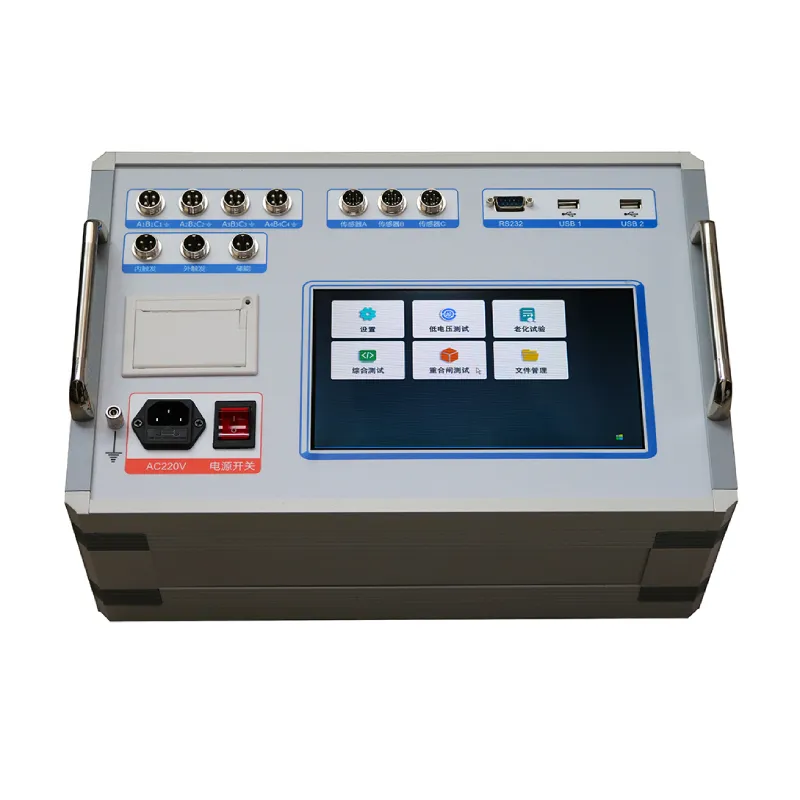 English
English


Moisture Measurement Device for Transformer Oil Monitoring and Quality Control
Understanding the Importance of Transformer Oil Moisture Testing
Transformer oil is a crucial component in the operation of electrical transformers. It serves multiple purposes, including insulation, cooling, and maintaining the electrical characteristics of the transformer. However, one of the significant threats to transformer oil performance is moisture. The presence of moisture in transformer oil can severely affect the operational efficiency and lifespan of the transformer. Therefore, regular moisture testing of transformer oil is essential for maintaining the reliability and safety of electrical systems.
What is Transformer Oil Moisture Testing?
Transformer oil moisture testing refers to the process of measuring the water content in transformer oil. This can be done using various methods, including Karl Fischer titration, capacitive sensors, and hygrometric techniques. The primary goal of these tests is to determine the moisture concentration, which is critical since high levels of water in transformer oil can lead to several problems, including reduced electrical insulation properties, increased corrosion, and accelerated aging of the oil.
Why is Moisture Monitoring Important?
1. Prevention of Electrical Failures Water can significantly reduce the dielectric strength of transformer oil, making it less effective at insulating electrical components. A drop in dielectric strength can lead to partial discharges and eventually catastrophic failures in transformers, resulting in costly downtime and repairs.
2. Longevity of Transformer Components Moisture accelerates the degradation of insulation materials, leading to a shorter lifespan of transformer components. By regularly monitoring moisture levels, utilities can take proactive measures to maintain the health of the insulation system and prolong the life of the transformer.
3. Cost Efficiency Regular moisture testing can help identify issues before they escalate into major problems. This can save utilities a significant amount of money in repair costs and increase the reliability of the electrical supply, thereby enhancing operational efficiency.
4. Environmental Considerations In many instances, transformer failures can lead to oil spills, causing environmental damage. By preventing transformer failures through effective moisture management, utilities can reduce their environmental footprint and comply with regulatory requirements.
Methods of Testing Moisture in Transformer Oil
There are several methods for testing moisture in transformer oil
transformer oil moisture tester

- Karl Fischer Titration This is one of the most accurate methods for measuring water content in oil. It involves a chemical reaction where iodine reacts with water, allowing for precise quantification of moisture levels.
- Capacitance-Based Sensors These devices measure changes in capacitance that are related to the moisture content in the transformer oil. They provide real-time monitoring and can alert operators to rising moisture levels.
- Spectroscopy Infrared spectroscopy can also be employed to analyze moisture content by detecting specific wavelengths of light absorbed by water molecules in the oil.
Best Practices for Moisture Management
To maintain the integrity of transformer oil and its components, several best practices should be adopted
1. Regular Testing Implement a regular testing schedule based on the age and condition of the transformer. Routine checks should be performed more frequently for older transformers or those operating in moist environments.
2. Draining and Filtering If high moisture levels are detected, draining the oil and filtering it can help remove contaminants and restore the oil’s integrity.
3. Monitoring Environmental Conditions Keeping an eye on the ambient conditions around the transformer can also help in understanding moisture ingress. Factors like humidity, temperature, and flooding can significantly influence moisture levels in transformer oil.
4. Use of Dehydration Equipment In cases where moisture accumulation is a recurrent issue, the installation of dehydration equipment can help maintain adequate moisture levels.
Conclusion
Transformer oil moisture testing is a critical practice that ensures the reliability and efficiency of electrical transformers. By understanding the significance of moisture levels in transformer oil and implementing a robust testing and maintenance program, utilities can enhance the operational longevity of their assets, reduce costs, and mitigate environmental impacts. Emphasizing moisture management in transformer oil not only safeguards equipment but also contributes to the overall stability of electrical systems.
-
Differences between open cup flash point tester and closed cup flash point testerNewsOct.31,2024
-
The Reliable Load Tap ChangerNewsOct.23,2024
-
The Essential Guide to Hipot TestersNewsOct.23,2024
-
The Digital Insulation TesterNewsOct.23,2024
-
The Best Earth Loop Impedance Tester for SaleNewsOct.23,2024
-
Tan Delta Tester--The Essential Tool for Electrical Insulation TestingNewsOct.23,2024





